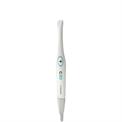
How to Troubleshoot Common Filter Press Problems: A Practical Guide to Quick Diagnosis and Resolution
November 25, 2025
How to Troubleshoot Common Filter Press Problems: A Practical Guide to Quick Diagnosis and Resolution
Filter press downtime is one of the most frustrating and costly challenges facing operations managers in industries ranging from wastewater treatment to mining, chemical processing to food production. When your filtration system stops performing as expected, production grinds to a halt, deadlines are missed, and costs mount rapidly. The key to minimizing these disruptions lies in quickly identifying the root cause of problems and implementing effective solutions.
Understanding how to troubleshoot common filter press issues empowers your team to resolve many problems without waiting for outside service technicians, dramatically reducing downtime and keeping operations running smoothly. Whether you're working with a traditional recessed filter press or advanced membrane systems, this comprehensive troubleshooting guide will help you diagnose and resolve the most frequent filtration challenges.
Problem 1: Excessive Filtrate Leakage
One of the most visible and concerning problems is filtrate leaking from between filter plates during operation. This issue not only wastes product but also creates safety hazards, cleanup challenges, and potential environmental concerns.
Possible Causes:
- Damaged or worn filter cloths that no longer create an effective seal
- Misaligned filter plates preventing proper compression
- Insufficient hydraulic closing pressure
- Residue buildup on plate sealing surfaces
- Warped or cracked filter plates
- Incorrectly installed filter cloths
Troubleshooting Steps: Begin by stopping the filtration cycle and carefully examining the plates where leakage occurs. Check filter cloths for tears, holes, or worn areas, particularly around the edges where sealing is critical. Even small cloth damage can cause significant leakage under pressure.
Inspect plate sealing surfaces for residue buildup or dried cake material. Run your finger along the sealing ridge—any roughness or accumulated material prevents proper sealing. Clean all sealing surfaces thoroughly with appropriate cleaning methods before reassembling.
Verify that filter cloths are correctly centered on plates with no bunching, folding, or misalignment. Improperly positioned cloths create leak paths that compromise the entire filtration chamber. Reinstall any misaligned cloths carefully, ensuring proper positioning before closing the press.
Check hydraulic pressure gauges to confirm the system is achieving specified closing pressure. Insufficient pressure fails to compress plates adequately, leaving gaps that allow leakage. If pressure is low, investigate hydraulic system issues including fluid levels, pump function, and cylinder condition.
Examine plates themselves for warping, cracks, or damage. Place a straightedge across plate surfaces to detect warping that prevents flat contact. Warped or damaged plates require replacement—they cannot be effectively repaired.
Problem 2: Extended Filtration Cycle Times
When filtration cycles take significantly longer than normal to complete, productivity suffers dramatically. Identifying why filtration rates have slowed is essential to restoring efficient operation.
Possible Causes:
- Blinded filter cloths with reduced permeability
- Changes in slurry characteristics (particle size, concentration, temperature)
- Inadequate feed pressure
- Partially clogged plate drainage channels
- Deteriorating filter cloth material
Troubleshooting Steps: Start by comparing current filtration times against historical data to quantify the slowdown. Document exactly how much longer cycles are taking and when the change first occurred. This timing information often provides clues about the underlying cause.
Inspect filter cloths carefully for blinding—the condition where particles become permanently lodged in the weave, reducing permeability. Hold cloths up to light; if significantly less light passes through compared to new cloths, blinding is occurring. Implement intensive chemical cleaning to attempt restoration, or replace cloths if cleaning is ineffective.
Analyze your slurry characteristics. Has particle size distribution changed? Is solids concentration higher than normal? Are you processing material at a different temperature? Any of these factors dramatically affect filtration rates. Adjusting slurry properties to match optimal filtration conditions often resolves performance issues.
Check feed pump performance and pressure gauges to ensure adequate slurry pressure is being delivered to the filter press. Low feed pressure extends filtration time by reducing the driving force that moves liquid through filter media. Pump maintenance, impeller replacement, or system pressure adjustment may be necessary.
Examine plate drainage channels for partial blockage. Accumulated scale, precipitates, or debris can restrict filtrate flow even when cloths are functioning properly. Disassemble the press and clean all drainage channels thoroughly, paying attention to small ports and passages where blockages easily occur.
Problem 3: Wet or Soft Filter Cakes
If filter cakes come out wetter or softer than expected, downstream processing becomes difficult, disposal costs increase, and valuable solids may be lost. Achieving proper cake dryness is essential for operational success.
Possible Causes:
- Insufficient filtration time before cake discharge
- Low filtration pressure
- Blinded filter cloths restricting liquid removal
- Inappropriate filter cloth permeability for your application
- Compressible cake materials that resist dewatering
- Malfunctioning membrane squeeze cycle (for membrane presses)
Troubleshooting Steps: Review your cycle timing to ensure adequate filtration and compression time. Rushing cycles to increase throughput often produces wet cakes that cause more problems than the time savings justify. Extend filtration time and monitor cake dryness improvement.
Verify operating pressure is within specified ranges. Low pressure fails to adequately compress cakes and drive liquid out. Increase pressure incrementally while monitoring results, staying within equipment and cloth ratings.
For membrane filter press systems, verify the membrane squeeze cycle is functioning correctly. Check membrane inflation pressure, hold time, and air supply systems. Malfunctioning membranes dramatically reduce dewatering effectiveness. Consult with experienced filter press manufacturers in India or your equipment supplier for membrane system diagnostics.
Test filter cloth permeability to ensure it matches your application requirements. Cloths that are too tight (low permeability) restrict liquid removal and produce wet cakes. Cloths that are too open allow excessive solids passage. Working with knowledgeable suppliers ensures you select appropriately rated cloths for your slurry characteristics.
Consider slurry pretreatment options if cake materials are inherently difficult to dewater. Flocculants, coagulants, or pH adjustment can significantly improve cake formation and dewatering characteristics. Process chemistry modifications often solve problems that equipment adjustments cannot address.
Problem 4: Filter Plates Won't Open or Close Properly
Mechanical problems preventing proper press operation cause frustrating delays and can damage equipment if operators force movement against resistance.
Possible Causes:
- Hydraulic system failures
- Dried cake material jamming between plates
- Bent or misaligned guide rails
- Damaged plate lifting mechanisms
- Insufficient lubrication on moving components
- Obstructions in the plate stack
Troubleshooting Steps: Check hydraulic fluid levels and system pressure first. Low fluid or failed hydraulic components prevent proper actuation. Look for visible leaks, unusual sounds from the hydraulic pump, or erratic movement that indicates system problems.
Inspect guide rails and plate track surfaces for damage, deformation, or accumulated debris. Clean all surfaces thoroughly and check alignment. Even minor rail misalignment can cause plates to bind and resist movement.
Examine the plate stack for dried cake material between plates or around edges. Cake buildup can cement plates together, particularly if filtration has been idle for extended periods. Carefully separate plates and clean all surfaces before attempting normal operation.
Lubricate all moving components according to manufacturer specifications. Insufficient lubrication causes excessive friction that prevents smooth operation and accelerates wear. Use only recommended lubricants—incorrect products can attract contaminants or damage seals.
For automatic plate shifters or hydraulic opening systems, check electrical connections, limit switches, and control systems. Electrical faults often manifest as mechanical problems but require different diagnostic approaches.
Problem 5: Cloudy or Contaminated Filtrate
When filtrate quality deteriorates, downstream processes are affected and product specifications may not be met. Identifying the source of contamination is critical.
Possible Causes:
- Damaged filter cloths allowing solids passage
- Incorrect cloth permeability rating
- Leakage around plate seals
- Inadequate cloth precoating (where applicable)
- Changes in slurry particle size distribution
Troubleshooting Steps: Collect filtrate samples from different areas of the press to determine if contamination is localized or system-wide. Localized contamination suggests specific plates or cloths are failing, while system-wide issues point to cloth specification problems or process changes.
Inspect all filter cloths carefully for damage. Even small holes or tears allow solids passage and contaminate filtrate. Replace any damaged cloths immediately and investigate why damage occurred to prevent recurrence.
Verify filter cloth specifications match your application requirements. Cloths with openings larger than your particle size allow excessive solids passage. Switching to tighter weave patterns or different materials may be necessary.
Check for leakage around plate seals that could allow unfiltered slurry to bypass the filtration process and mix with clarified filtrate. Address any sealing issues immediately to prevent cross-contamination.
Analyze your slurry to determine if particle size distribution has changed. Finer particles in your feed material may pass through cloths that previously performed adequately. Process modifications or cloth selection changes may be required to accommodate changed feed characteristics.
Problem 6: Hydraulic System Issues
Hydraulic problems affect every aspect of filter press operation, from closing pressure to plate shifting mechanisms.
Possible Causes:
- Low hydraulic fluid levels
- Contaminated hydraulic fluid
- Worn hydraulic seals
- Faulty pressure relief valves
- Air in hydraulic lines
- Pump wear or failure
Troubleshooting Steps: Check hydraulic fluid level first—this simple check resolves many apparent hydraulic problems. Add fluid as needed, using only specified grades and types.
Examine fluid condition by collecting a sample. Dark, dirty, or milky fluid indicates contamination or water intrusion. Change fluid and filters if condition is poor.
Monitor pressure gauges during operation. Fluctuating pressure, inability to reach specified pressure, or pressure that drops rapidly all indicate specific hydraulic system problems that require targeted diagnostics.
Listen for unusual sounds from the hydraulic pump—whining, grinding, or cavitation noises indicate pump problems or air in the system. Bleeding air from hydraulic lines often resolves erratic operation.
Inspect visible hydraulic components for leaks, particularly around cylinders, fittings, and hoses. Even small leaks cause pressure loss and contaminate the surrounding area.
Preventive Troubleshooting Approach
The best troubleshooting approach is preventing problems before they occur. Implement regular inspection schedules, maintain detailed operation logs, train personnel thoroughly on proper operation and early problem detection, stock critical spare parts including cloths, seals, and common failure items, and establish relationships with knowledgeable suppliers who can provide rapid technical support.
Document all problems and solutions in a troubleshooting log. Patterns emerge over time that reveal recurring issues needing permanent solutions rather than repeated repairs.
When to Call for Professional Help
While many filter press problems can be resolved in-house, some situations require expert assistance. Contact professional service technicians or your equipment supplier when problems persist despite troubleshooting efforts, structural damage to major components is suspected, hydraulic system problems exceed your team's expertise, electrical or control system issues are complex, or you need guidance on process modifications to address ongoing filtration challenges.
Working with experienced filter press manufacturers in India ensures access to technical expertise, genuine replacement parts, and support that keeps your equipment operating optimally.
Conclusion
Effective troubleshooting minimizes downtime, reduces costs, and keeps your filtration operations running smoothly. By understanding common problems, their causes, and systematic diagnostic approaches, your team can quickly identify and resolve most filter press issues. Whether you're operating a recessed filter press, membrane filter press, or other filtration systems, these troubleshooting techniques provide a foundation for maintaining reliable, efficient operation.
Remember that prevention is always better than repair. Regular maintenance, proper operation, and attention to early warning signs prevent most serious problems from developing. When issues do arise, systematic troubleshooting based on understanding your equipment and process leads to faster resolution and better long-term results.










